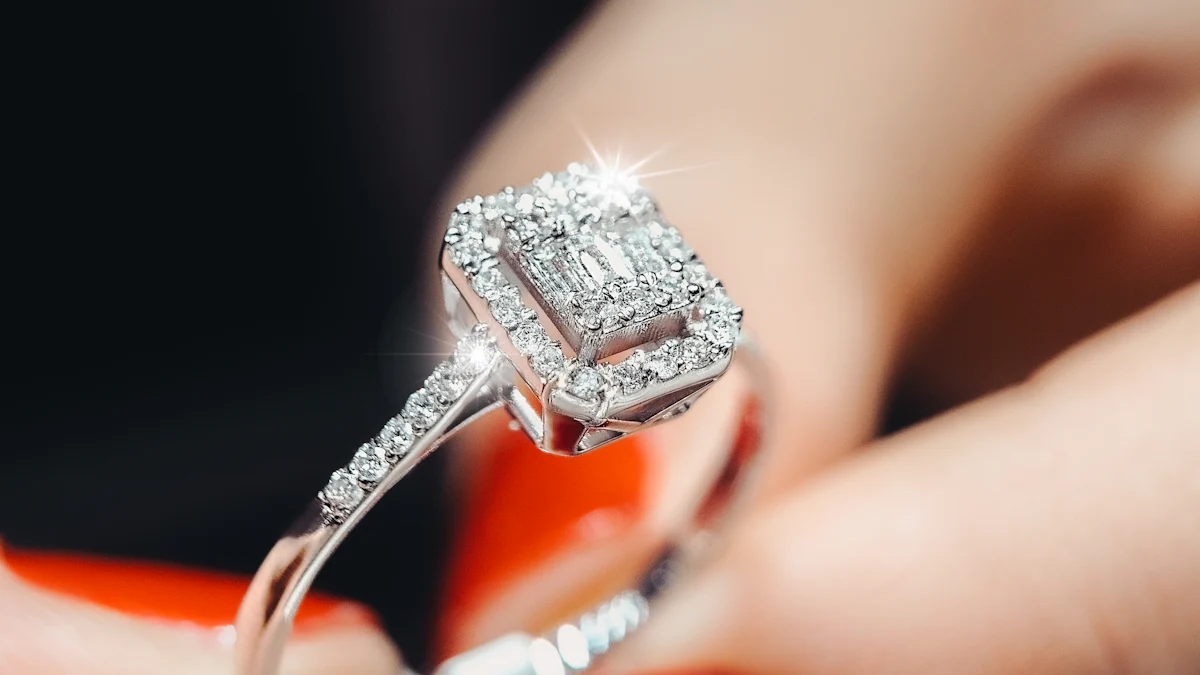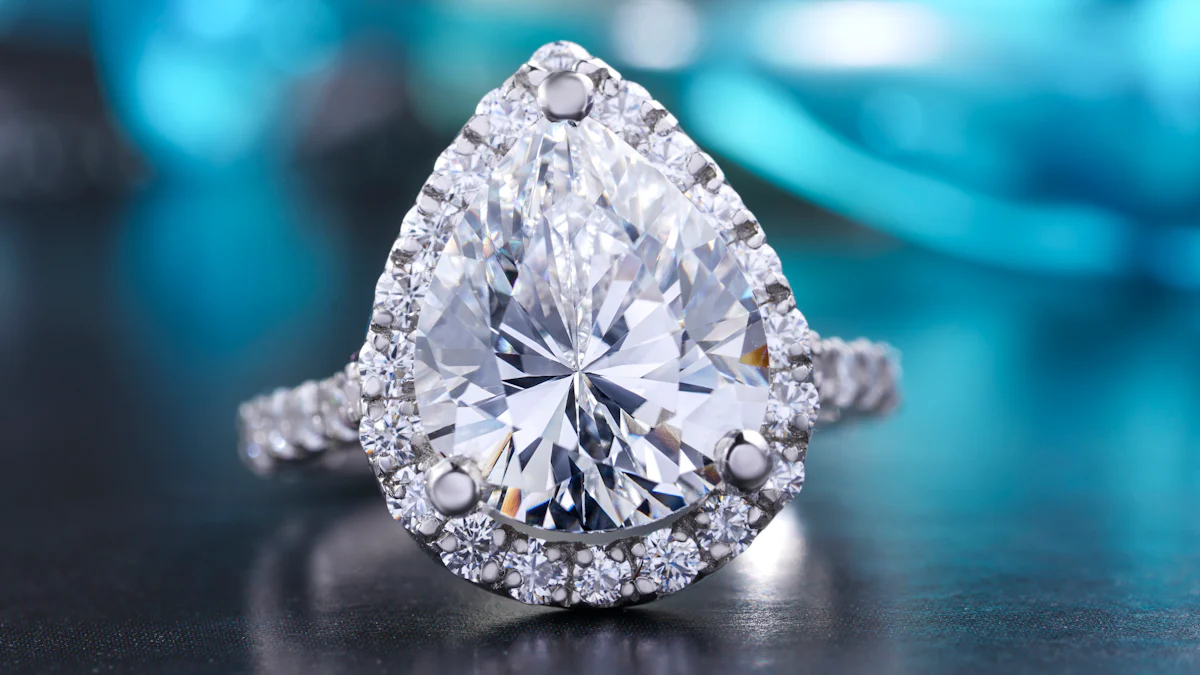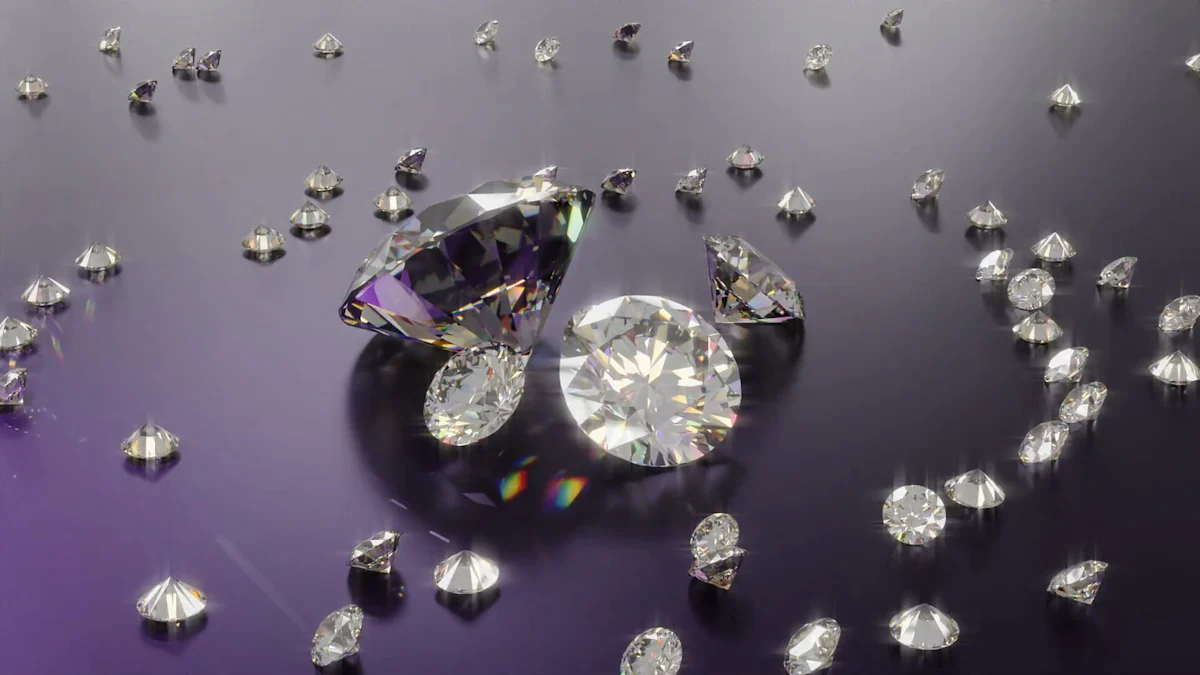What Does VVS Stand For in Diamond History

VVS stands for "Very, Very Slightly Included," which is a clarity grade that signifies exceptional quality in diamonds. When asking what does VVS stand for, it’s important to note that this clarity grade indicates that inclusions are so minimal they can only be seen under magnification. VVS inclusions are nearly invisible to the naked eye, making these diamonds highly sought after for their pristine appearance.
Clarity plays a crucial role in determining a diamond's value. It is one of the four Cs, alongside cut, carat weight, and color. While cut has the most significant impact on a diamond's brilliance, clarity-grade differences, especially at higher levels, can dramatically affect price. Diamonds with a VVS clarity grade represent a rare combination of beauty and value, appealing to those who seek perfection in their gemstones.
The History of VVS Diamonds

The Origins of Diamond Grading
The concept of diamond grading emerged in the early 20th century. Before modern systems, jewelers relied on subjective methods to evaluate diamonds. They assessed clarity and color using natural daylight, often between 10 a.m. and 2 p.m., when the light was most consistent. Color grading terminology varied widely, often reflecting the geographical origins of the diamonds. These early methods lacked standardization, leading to inconsistencies in evaluations.
Significant progress occurred in 1931 with the establishment of the Gemological Institute of America (GIA). This organization aimed to create a universal system for diamond grading. By 1953, the GIA introduced the International Diamond Grading System, which became the foundation for modern evaluations. Two years later, in 1955, the first GIA grading reports were issued, marking a pivotal moment in the history of diamond assessment.
The Introduction of VVS in the GIA Grading System
The GIA's grading system revolutionized how diamonds were classified. It introduced clarity grades that ranged from Flawless (FL) to Included (I). Among these, the VVS clarity grade, which stands for "Very, Very Slightly Included," became a benchmark for near-perfection. This grade was divided into two subcategories: VVS1 and VVS2. Both represent diamonds with inclusions so minute that they are nearly impossible to detect, even under magnification.
The introduction of VVS diamonds into the GIA system in 1953 provided buyers with a reliable way to identify high-quality stones. This clarity grade quickly gained recognition for its rarity and beauty, setting a new standard in the diamond industry.
VVS Diamonds as a Symbol of Luxury in History
Throughout history, VVS diamonds have symbolized luxury and exclusivity. Their exceptional clarity and brilliance made them a favorite among royalty and the elite. These diamonds often adorned crowns, necklaces, and other regal jewelry pieces. The rarity of VVS1 and VVS2 diamonds elevated their status, making them a coveted choice for those seeking unparalleled quality.
In modern times, VVS diamonds continue to represent sophistication and prestige. They remain a popular choice for engagement rings and high-end jewelry, appealing to individuals who value perfection and timeless elegance.
The Significance of VVS Diamonds
What Makes VVS Diamonds Unique
VVS diamonds stand out due to their exceptional clarity and rarity. These diamonds feature inclusions so minimal that they are nearly invisible, even under magnification. This clarity allows light to pass through the diamond without obstruction, resulting in unmatched brilliance and sparkle. Their rarity further enhances their appeal, as only a small percentage of diamonds achieve the VVS1 or VVS2 clarity grades.
Several factors contribute to their uniqueness:
- Exceptional clarity due to minimal inclusions.
- Flawless light reflection, creating a captivating sparkle.
- Durability, as fewer inclusions reduce the risk of chipping.
- Aesthetic appeal, enhancing the overall beauty of the diamond.
Jewelers and gemologists use advanced tools like microscopes and 10x magnification loupes to identify the tiny inclusions in VVS diamonds. They meticulously examine both internal and surface characteristics to ensure accurate grading. This rigorous process highlights the superior quality of VVS diamonds, making them a preferred choice for those seeking perfection.
The Role of Clarity in Diamond Value
Clarity plays a significant role in determining a diamond's value. Higher clarity grades, such as VVS1 and VVS2, command premium prices due to their rarity and flawless appearance. For example, a diamond with SI2 clarity may retail for $6,500, while a similar diamond with VVS1 clarity can cost around $13,500. This steep price difference reflects the importance of clarity in the diamond market.
While clarity is crucial, other factors like cut, carat weight, and color also influence a diamond's value. However, the clarity grade becomes particularly important at higher levels, where even slight differences can dramatically impact pricing. Buyers often prioritize eye-clean diamonds, ensuring they achieve a balance between quality and cost.
VVS Diamonds and Consumer Perception
Modern consumers view VVS diamonds as symbols of purity and exclusivity. Their exceptional clarity and brilliance make them a popular choice for engagement rings and fine jewelry. Many buyers associate these diamonds with unblemished and enduring love, enhancing their emotional appeal.
Consumers also value the durability and versatility of VVS diamonds in jewelry design. Ethical sourcing has become an important consideration, with buyers preferring conflict-free diamonds. Marketing strategies, including celebrity endorsements, further elevate the status of VVS diamonds, associating them with elegance and luxury. These factors collectively shape consumer perceptions, making VVS diamonds a timeless choice for those seeking flawless beauty.
VVS Diamonds in Modern Times

Trends in the Modern Diamond Market
The modern diamond market has seen a growing demand for VVS diamonds, especially in high-end jewelry. These diamonds are a popular choice for diamond engagement rings due to their exceptional clarity and brilliance. Celebrity endorsements have further elevated their status, associating them with sophistication and exclusivity. Many consumers view VVS diamonds as a symbol of success and luxury.
Market trends also reveal that economic stability and consumer confidence significantly influence the demand for VVS diamonds. During periods of economic growth, buyers are more likely to invest in these premium gemstones. Ethical sourcing has become another critical factor, with consumers increasingly seeking conflict-free diamonds. This shift reflects a broader awareness of sustainability and responsible practices in the diamond industry.
Ethical Sourcing and VVS Diamonds
Ethical sourcing has become a priority for many buyers when purchasing diamonds. Consumers often prefer conflict-free VVS diamonds, as knowing their gemstone is responsibly sourced provides peace of mind. Lab-grown VVS diamonds offer an ethical alternative to traditional mined diamonds. These diamonds are created in controlled environments, ensuring they have the same exceptional clarity and inclusions-free quality as natural diamonds.
Lab-grown diamonds also address environmental concerns. Their production requires fewer resources and has a lower environmental impact compared to mining. Buyers who choose lab-grown VVS diamonds demonstrate a commitment to sustainability and ethical practices. This shift has influenced the availability and price of diamonds, as demand for responsibly sourced options continues to rise.
The Future of VVS Diamonds
Advancements in technology are shaping the future of VVS diamonds. Lab-grown diamonds are becoming nearly indistinguishable from natural ones, offering consumers more choices. Improved production processes have made it possible to create larger diamonds with exceptional clarity and fewer inclusions. These innovations have also led to lower prices, making VVS diamonds more accessible to a broader audience.
Customization is another emerging trend. Buyers can now personalize their diamonds to suit individual preferences, enhancing their appeal. Blockchain technology is improving transparency in the diamond supply chain, ensuring ethical sourcing. Additionally, artificial intelligence is revolutionizing clarity grading, providing greater accuracy and efficiency.
Consumer preferences are also evolving. Many buyers prioritize ethical and sustainable practices, leading to increased interest in lab-grown VVS diamonds. Economic factors and trends in the 4 C’s, such as the popularity of brilliant cut diamonds, will continue to influence the market. As these developments unfold, VVS diamonds will remain a timeless choice for those seeking beauty and perfection.
VVS diamonds have held a place of distinction throughout history and continue to captivate modern buyers. Their exceptional clarity, achieved through rare natural conditions, sets them apart as symbols of near-perfection. These diamonds, with inclusions visible only under magnification, represent the pinnacle of brilliance and beauty. Their rarity elevates their status, making them a top choice for fine jewelry and engagement rings.
Buyers can use clarity grades like VVS to make informed decisions. Certification ensures quality assurance, while understanding the differences between clarity grades helps consumers appreciate the value of these diamonds. By prioritizing clarity, individuals can select diamonds that combine beauty, durability, and long-term appeal.
VVS diamonds shine as timeless treasures, offering unmatched elegance and a lasting legacy for those who seek perfection.
FAQ
What does VVS mean in diamond clarity?
VVS stands for "Very, Very Slightly Included." It refers to diamonds with tiny inclusions that are almost impossible to see, even under magnification. This clarity grade highlights the diamond's exceptional quality and rarity.
How can someone identify a VVS diamond?
A VVS diamond requires professional evaluation. Gemologists use 10x magnification to detect inclusions. Without specialized tools, identifying a VVS diamond is nearly impossible due to its flawless appearance to the naked eye.
Are VVS diamonds more expensive than other clarity grades?
Yes, VVS diamonds cost more due to their rarity and superior clarity. Their minimal inclusions enhance their brilliance, making them highly valuable compared to lower clarity grades like SI or I.
Do lab-grown diamonds have VVS clarity?
Lab-grown diamonds can achieve VVS clarity. These diamonds undergo controlled production processes, ensuring minimal inclusions. They offer an ethical and sustainable alternative to natural VVS diamonds while maintaining the same quality.
Why are VVS diamonds popular for engagement rings?
VVS diamonds symbolize purity and perfection. Their brilliance and rarity make them a timeless choice for engagement rings. Buyers often associate them with enduring love and exclusivity, enhancing their emotional appeal.
Tip: Always request a certification from a trusted gemological institute, like GIA, to verify a diamond's clarity grade.
See Also
Uncovering The History Behind Diamond Engagement Rings
The Importance Of Three Stone Diamond Rings Explained
A Guide To Various Styles Of Diamond Wedding Rings

